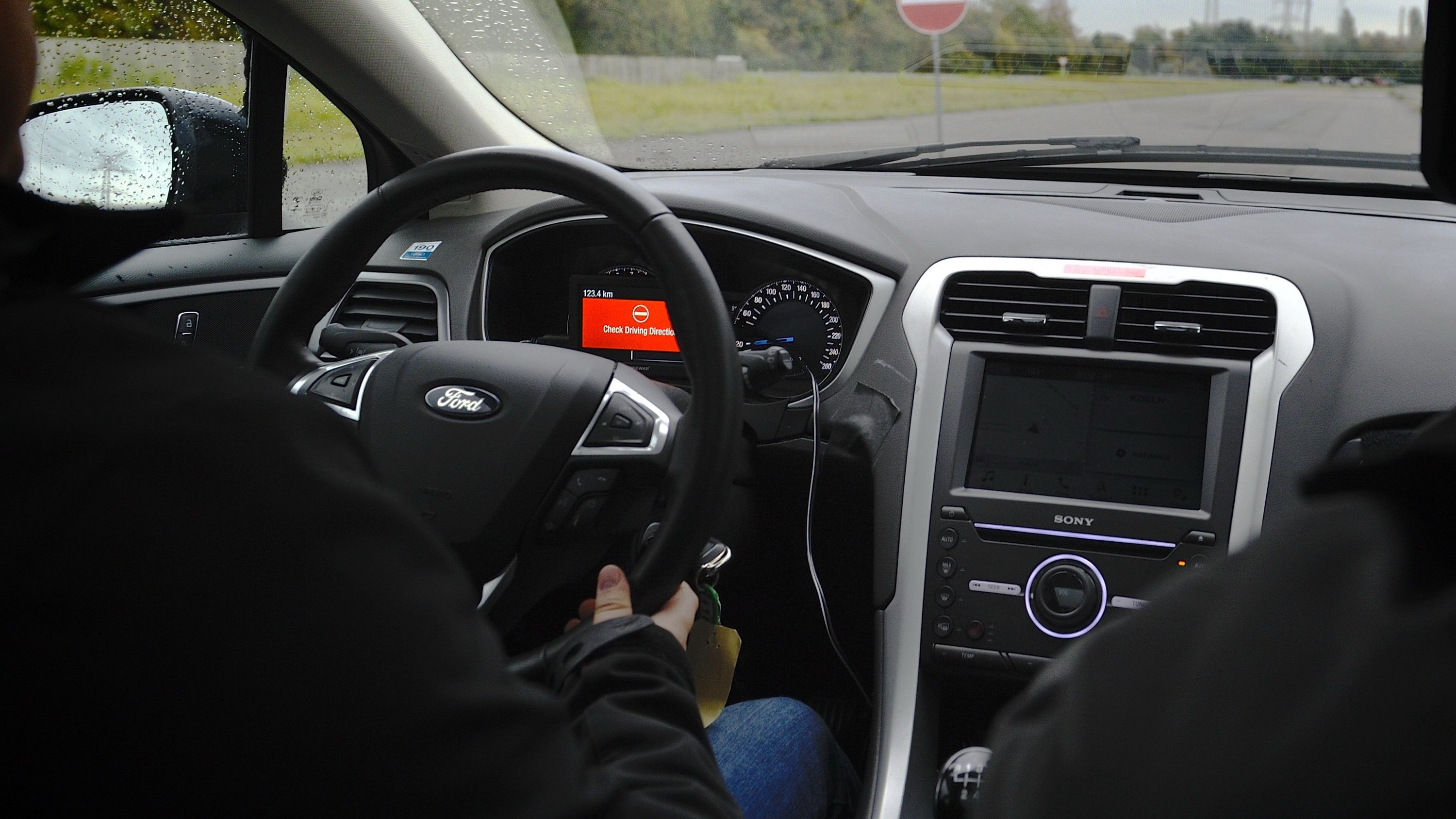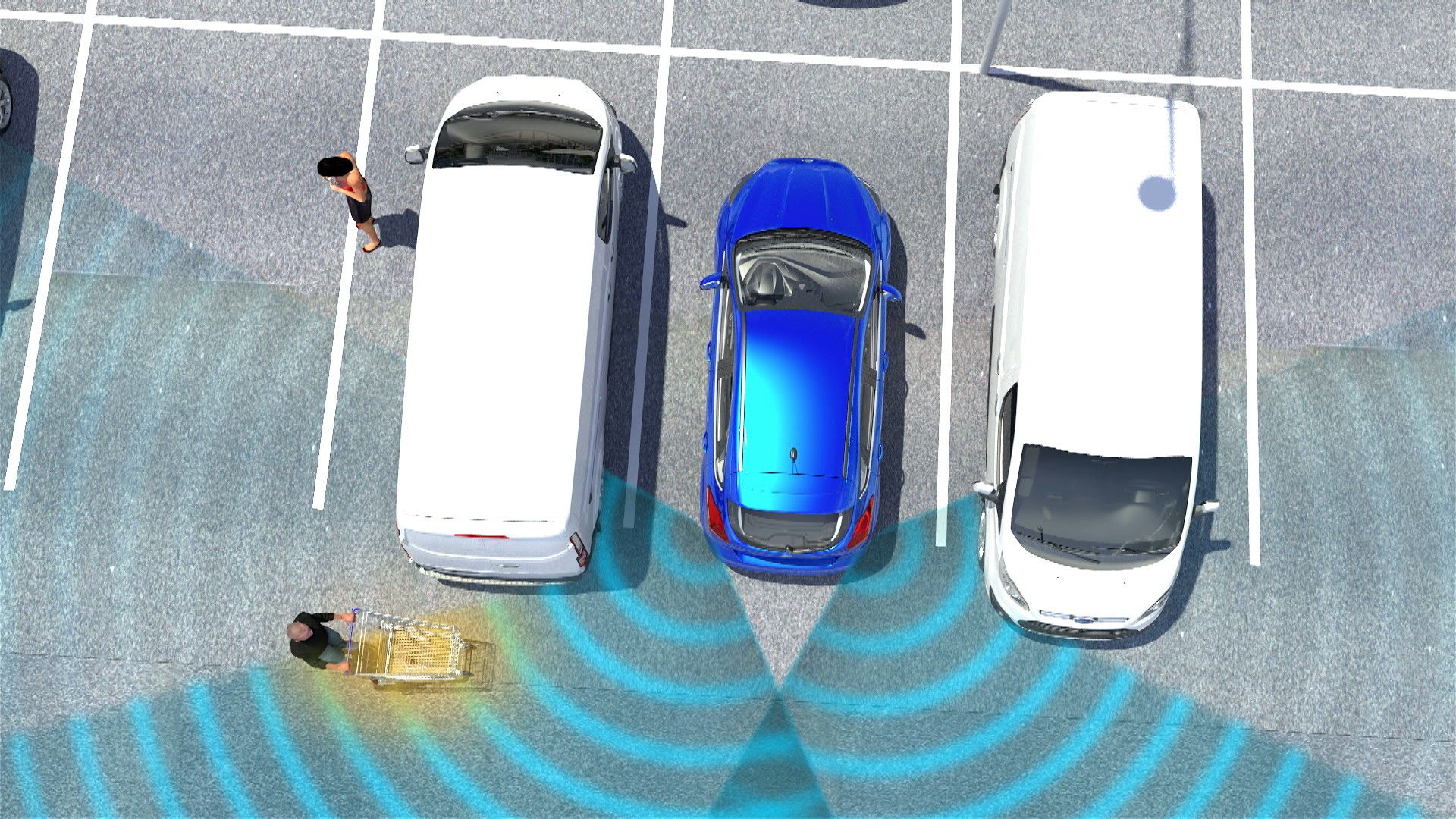Welp, we’re well on our way to a fully autonomous driving future! Whether that sentence fills you with hope and optimism, or fear and dread, it doesn’t really matter. You see, the thing is, it looks like we’re gonna be living with self-driving cars one way or another, and in the transition, we’ll be seeing lots and lots of new technologies aimed at improving the safety and convenience of the modern automobile. Classified as “driver-assist” features, these technologies are being introduced in pretty much every segment of the automotive spectrum, and the Blue Oval just announced its latest efforts to deliver the most cutting-edge tech on the market. Included are features to “ease parking hassles, improve collision avoidance, detect objects in the road and prevent wrong-way driving.”
To help you slot in between the lines at the supermarket without knocking over an errant cart, Ford is developing a cross-traffic alert system that’ll kick in when backing into or out of a parking spot. The system will use radar and a wide-view camera to detect objects or people that are blocking ingress and egress to a parking spot, relaying a warning to the driver and even applying the brakes if needed.
This system also gets active park assist that will take the reigns and parallel park the car for you, controlling the steering, gear selection, braking and throttle.
Further systems in development at research centers in Germany will automatically steer your car around objects in the road. It’s called evasive steering assist, and it’s designed to work at both highway and city speeds. The system uses radar and camera systems to detect cars and obstacles, and if an imminent collision is spotted, extra steering input is added should the driver decide to “take evasive action.”
Finally, there’s a proposed system that integrates a windshield-mounted camera and navigation info to detect if a driver is headed the wrong way into traffic, sending audible and visual warnings.
These technologies are expected to see integration on Ford’s upcoming models in the next two years. Read on for more info, some of the other tech in development, and what it all means.
Continue reading for the full story.
Why it matters
In conjunction with the systems outlined above, Ford is also developing something called spot lighting technology, which uses infrared cameras to detect pedestrians, cyclists and animals. These potential hazards are then highlighted for the driver, presumably through augmented reality windshields and windows.
There’s also an advanced lighting system that will use cameras to detect intersections and roundabouts, widening the headlight beams accordingly to help see around corners.
Finally, there’s traffic jam assist, which will keep you positioned inside your lane and automatically apply the brakes and throttle to keep you with the flow (or lack thereof) of traffic.
All this tech will join Ford’s current lineup of driver assist features, which includes adaptive cruise control, forward collision warning, lane departure warning, lane-keep assist, attention assist, adaptive high beams, and blind spot monitor.
Interestingly, a lot of these technologies tend to piggyback off one another. For example, it’s not too difficult to discern how the radar used for adaptive cruise control can be reconfigured to provide data for the traffic jam assist feature.
The broader take on all this is the eventual integration of all these systems for a totally autonomous vehicle. However, before something like that can hit the market, automakers like Ford need to iron out all the bugs in the various systems.
Some automakers are more bullish. Tesla, for example, is in hot water for its Autopilot feature. While the California-based automaker maintains that Autopilot is still in the beta phase, some users are abusing the system to relinquish all responsibility behind the wheel.
That’s certainly the direction we’re headed, but we’re not there yet. In the meantime, these active “driver-assist” features will provide a nice stopgap and prime the general public for the day when fully autonomous cars rule the streets.
But I can’t help but wonder – what will that future look like? For example, how will these technologies affect car chase scenes in movies? Will future audiences scoff when a car doesn’t automatically brake for an imminent collision?
What sort of features do you want to see? Are you looking forward to self-driving vehicles, or does the idea not sit well with you? Let us know in the comments.


